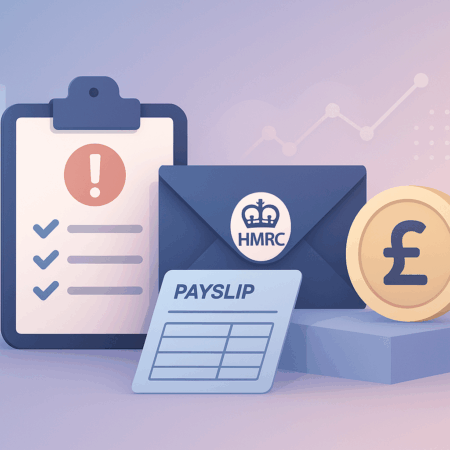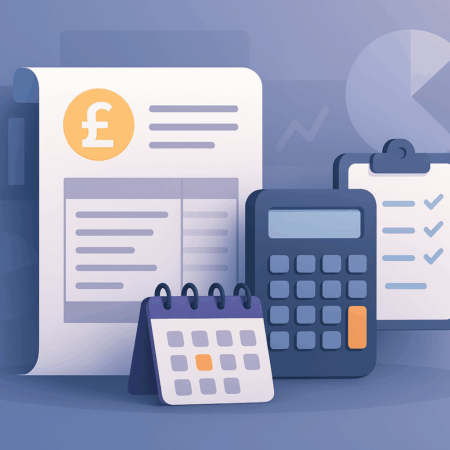Owning a holiday home in the UK is a dream for many—think cosy cottages in Cornwall or chic flats in the Cotswolds. But when it’s time to sell, the joy of pocketing a profit can be dampened by Capital Gains Tax (CGT). This tax on the profit from selling your second home can catch you off guard if you’re not prepared. Luckily, a Capital Gains Calculator for Property UK can take the sting out of the process, helping you work out your tax bill in a jiffy. In this guide, I’ll explain how CGT applies to UK holiday homes, walk you through a real-world example with proper sums, and share tips to keep your tax bill as low as a British summer’s thermostat. Let’s get started!
What Is Capital Gains Tax on Property?
Capital Gains Tax is what you pay on the profit (or “gain”) when you sell an asset that’s gone up in value. For property, this includes:
- Holiday homes: Second properties used for personal getaways.
- Buy-to-let properties: Homes you rent out for income.
- Inherited properties: Properties passed down that you later sell.
- Land or commercial premises: If they’re not your main home.
Your primary residence usually escapes CGT thanks to Private Residence Relief (PRR), but if you’ve lived in your holiday home for part of the time, you might qualify for partial relief—more on that later. The tax is calculated on the difference between your sale price and what you paid, minus allowable costs like legal fees or renovations.
For the 2025/26 tax year, every individual gets a £3,000 tax-free allowance (the Annual Exempt Amount, or AEA). Gains above this are taxed at rates based on your income. A Capital Gains Calculator for Property UK makes this a breeze by crunching the numbers for you, so you don’t need to channel your inner mathematician.
Why You Need a Capital Gains Calculator for Property
When my uncle sold his seaside bungalow in Devon a few years back, he was gobsmacked by the CGT bill. He hadn’t factored in how his income pushed him into a higher tax band or that his home improvements could lower the tax. A Capital Gains Calculator for Property UK would’ve saved him from that shock. These tools let you input:
- Purchase price of the property.
- Sale price (or market value if gifted).
- Costs like stamp duty, legal fees, or estate agent fees.
- Improvement costs (e.g., adding a deck or refurbishing).
- Your annual income to determine your tax band.
- Details of any time you lived in the property (for PRR).
The calculator gives you an instant estimate of your CGT liability, helping you plan your sale or budget for the tax. With holiday homes, you’ve got to report and pay CGT within 60 days of the sale, so a calculator’s speed is a lifesaver.
CGT Rates and Rules for 2025/26
Here’s the lowdown for the 2025/26 tax year:
- Annual Exempt Amount (AEA): £3,000 per person. You can’t carry it forward, so use it each year.
- CGT Rates for Property:
- Basic-rate taxpayers (income up to £50,270): 18%.
- Higher/additional-rate taxpayers (income above £50,270): 24%.
- Reporting and Payment:
- For residential property (like holiday homes), report and pay CGT within 60 days of completion using HMRC’s online service.
- For other assets, include gains in your Self-Assessment tax return by 31 January after the tax year (e.g., 31 January 2027 for 2025/26).
Note: These figures are accurate as of July 2025, per HMRC guidelines. Tax rules can be as fickle as British weather, so always check with a tax professional.
Calculating CGT on a Holiday Home: A Step-by-Step Example
Let’s meet James, a 50-year-old accountant from London who sold his holiday cottage in Cornwall in June 2025. James lived in the cottage for two years before using it solely as a holiday home, so he might qualify for partial Private Residence Relief.
Scenario: James’s Holiday Cottage Sale
- Purchase Price (2010): £180,000
- Sale Price (June 2025): £320,000
- Buying Costs: £3,500 (legal fees + stamp duty)
- Selling Costs: £6,000 (estate agent + conveyancing)
- Improvement Costs: £20,000 (new roof and bathroom in 2015)
- Ownership Period: 15 years (180 months, from 2010 to 2025)
- Time Lived in Property: 2 years (24 months, 2010–2012)
- James’s Income (2025/26): £30,000 (basic-rate taxpayer)
- Other Gains: None this tax year
Step 1: Calculate the Gain
The gain is the sale price minus the purchase price and allowable costs:
[ \text{Gain} = \text{Sale Price} – (\text{Purchase Price} + \text{Buying Costs} + \text{Selling Costs} + \text{Improvement Costs}) ]
[ \text{Gain} = £320,000 – (£180,000 + £3,500 + £6,000 + £20,000) = £320,000 – £209,500 = £110,500 ]
James’s initial gain is £110,500.
Step 2: Apply Private Residence Relief (PRR)
James lived in the cottage for 24 months out of 180 months. He also gets PRR for the final 9 months of ownership (a standard HMRC rule for properties once used as a main home). So, he’s exempt for:
[ 24 + 9 = 33 \text{ months} ]
The proportion of the gain exempt under PRR is:
[ \text{Exempt Proportion} = \frac{33}{180} \approx 0.1833 ]
[ \text{Exempt Gain} = £110,500 \times 0.1833 \approx £20,258 ]
[ \text{Taxable Gain (before AEA)} = £110,500 – £20,258 = £90,242 ]
Step 3: Apply the Annual Exempt Amount (AEA)
James’s AEA for 2025/26 is £3,000, and he hasn’t used it elsewhere:
[ \text{Taxable Gain} = £90,242 – £3,000 = £87,242 ]
Step 4: Determine the CGT Rate
James’s income is £30,000, well within the basic-rate band (£50,270). Add his taxable gain to check if it pushes him into the higher-rate band:
[ £30,000 + £87,242 = £117,242 ]
- Basic-rate band available: £50,270 – £30,000 = £20,270
- Basic-rate CGT: £20,270 × 18% = £3,648.60
- Higher-rate CGT: (£87,242 – £20,270) × 24% = £66,972 × 24% = £16,073.28
- Total CGT: £3,648.60 + £16,073.28 = £19,721.88
Step 5: Report and Pay
As this is a residential property, James must report and pay £19,721.88 to HMRC within 60 days of completion (by August 2025). A Capital Gains Calculator for Property UK would handle the PRR calculation and tax band split, giving James a clear picture in seconds.
Tips to Minimise Your CGT on Holiday Homes
Nobody fancies a massive tax bill, so here are some ways to keep your CGT down, based on my chats with clients over countless cups of tea:
- Use Your AEA: Claim your full £3,000 allowance each year. If you’re married, transfer part of the property to your spouse to use their AEA (spousal transfers are usually tax-free).
- Maximise PRR: If you’ve ever lived in your holiday home, calculate the exempt period carefully, including the final 9 months.
- Deduct All Costs: Include buying costs (stamp duty, legal fees), selling costs (estate agents), and improvements (e.g., a new kitchen). Keep records to back these up.
- Offset Losses: Sold shares or another property at a loss? Use it to reduce your taxable gain.
- Plan Your Timing: Spreading sales across tax years can keep gains in the basic-rate band or under the AEA.
A mate of mine saved a packet by selling half his holiday home in one tax year and the rest in the next. A calculator can help you test these scenarios.
Pitfalls to Watch Out For
Holiday home owners often stumble on CGT. Here’s what to avoid:
- Missing the 60-Day Deadline: You must report and pay within 60 days for property sales, or HMRC could hit you with penalties.
- Misjudging PRR: Don’t assume your holiday home is fully exempt. Calculate the exact months you lived there.
- Forgetting Costs: Overlooking improvement costs like a new roof can inflate your gain.
- Ignoring Income: Your gain is added to your income, potentially pushing you into the 24% band. A calculator flags this risk.
Choosing a Top-Notch Capital Gains Calculator for Property
A good calculator is like a reliable satnav for CGT. Look for one that:
- Is updated for 2025/26 (£3,000 AEA, 18%/24% rates).
- Handles property-specific costs and partial PRR calculations.
- Factors in your income for accurate tax band splits.
- Comes from a trusted source like HMRC, TaxScouts, or UK Property Accountants.
- Offers clear guidance on reporting to HMRC.
Selling your holiday home should be about planning your next adventure, not wrestling with tax forms. A Capital Gains Calculator for Property UK is your secret weapon, giving you a quick, accurate estimate of your CGT so you can focus on the fun stuff—like dreaming up your next getaway. Whether it’s a Cornish cottage or a Lake District retreat, crunch the numbers early to avoid surprises.
Got a holiday home sale coming up? Pop your details into a calculator, and if the tax bill looks daunting, have a natter with a tax advisor. A little prep now can save you a lot of hassle later.
Sold a holiday home recently? Got a calculator tip? Share it in the comments!









